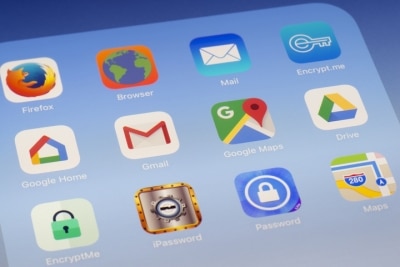Article
Personalization Will Grow Your Business – Or Your Competitor’s
July 27, 2017

If you’re still not convinced that personalization can bring substantial benefits to the companies that adopt it, the results from a new survey by Boston Consulting Group just might persuade you. BCG queried more than 50 large companies and found that:
- True personalization spurs growth. Brands that create personalized experiences by combining digital technologies and proprietary data are growing two to three times faster than those that do not
- Market share will shift to those who personalize. Over the next five years, in just three industries — retail, healthcare, and financial services–personalization will result in an $800 billion revenue shift to companies that get it right. BCG estimates that just 15% of companies will be among those who ‘get it right.’
The mechanism that enables these changes will sound familiar to anyone who knows what we’re about here at Sailthru. BCG found what we’ve long believed: that personalization allows brands to create individual user experiences, generating greater loyalty among customers.
Ecommerce company JustFab is one example of this: By personalizing their customers’ email and website experiences, JustFab boosted their revenue from email by 39%. Meanwhile, their customer churn rate sank by 46 percent.
While JustFab’s experience may sound exceptional, they’re not alone. Lifestyle company Alex and Ani, best known for its jewelry, used personalization to boost its email revenue by 73%. Over a three-month period, Betabrand increased its repeat purchase rate by 42%–again, thanks to personalization.
In its report, BCG stresses that personalization should go well beyond marketing. As the above results show, it’s simply too powerful to be corralled like that. Instead, says BCG, companies “need to put brand individualization at the forefront of their strategy agenda to influence everything they do, including marketing, operations, merchandising, and product development.”
Great Expectations, Impressive Results
The 50 companies surveyed by BCG have big expectations for their personalization programs.
- Two-thirds of respondents said they expect personalization to drive a revenue lift of six percent or more.
- Several companies said they’d already seen top-line gains of ten percent or more.
- At half of the top performers, personalization efforts are overseen by the CEO and the board of directors, which is the case at only about 20 percent of companies overall.
Most leaders in personalization, says BCG, are either tech companies or digital natives. That makes sense. These companies are built on technology, and they’re accustomed to using data to help anticipate and respond to customer desires.
That’s not to say that personalization is impossible for others. Far from it. BCG notes that Starbucks has been building one-to-one relationships, at scale, at least since 2014. That’s when it started sending customers personalized games that can be played through its app. These games have helped triple Starbucks’ marketing campaign results, doubled its email redemptions, and tripled the incremental spending of customers who redeem offers.
Disney is another leader. At its Orlando theme park, so-called magic bands let visitors reserve spots on rides, make purchases, and unlock their hotel rooms. At the Shanghai theme park, guests can complete these same functions on their cell phones. Carnival, taking note, is introducing ‘smart medallions,’ with similar functionality, on its cruise ships.
Most companies face both organizational and cultural barriers to personalization.
- The most commonly-cited problem, mentioned by 74% of companies, is the lack of dedicated staff to manage and run personalization initiatives.
- 60% percent of companies say that they don’t have a cross-channel team to manage customer communications
- 57% percent say it takes them three to six weeks to create a campaign
- And an additional 22% say it takes months to create a campaign
Four Pillars of Personalization
BCG lays out a four-step path for those who wish to become leaders in personalization:
- Strategy. Leaders in personalization ask questions such as “How can we have conversations with customers at all stages, rather than simply pushing campaigns?” and “What needs do customers have that they might not be aware of?” Then they prioritize the responses to these questions in terms of pain points, need, or opportunity. They ensure that every single intervention adds value for the customer.
- Data. Plenty of companies collect data. Far fewer know how to integrate and leverage it. Most companies don’t know how to get value from their data sets or how to tie disparate data sets together. The solution lies in building internal expertise and then hiring external partners to fill gaps when necessary.
- Technology platforms. Not every technology platform can handle one-to-one personalization at scale. Companies should be aiming to personalize in every channel on every device. That means that marketing, IT, and others need to make a series of careful and coordinated technology choices.
- Culture. Personalization leaders test and learn. They move quickly. They do this by collapsing silos, putting everyone in one place, and creating cross-functional personalization teams. The top performers in BCG’s survey ran more than 20 personalization tests a month and assessed campaigns in real time.
The leaders in personalization, as the BCG report notes, are already beginning to make themselves known. For those that wish to reap the rewards of ‘getting it right’ – more loyal customers, higher revenues – the time to act is now.
The State of Brand Loyalty in the U.S. in 2023
Related



